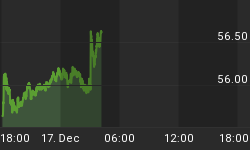Oftentimes, first impressions are the best because the perceived information strikes the mind unfiltered by second and third impressions that may begin to second-guess the first. The weekly and daily charts of the Mar Euro are first impression expressions.
Many will look at this weekly chart, well, maybe not so many, but of those who do, they will see that the recent high rallied above the February 2012 swing high and conclude the Euro is acting well. We would disagree, and here is why.
What caught our eye was the steep decline within the box, noting how fast the rate of acceleration was on the decline. Every succeeding weekly high was lower than the one before it for 11 straight weeks. Sellers were clearly in control, and when challenged on the next rally, they will defend their "territory." The largest of all the bars is the first one that began the sell-off. The next bar after it was a failed rally against it.
The challenge to that seller's control area is now, or a few weeks ago. Recent price stopped right at where the acceleration and failed rally began. You can see how the Euro is in an uptrend since last July. The solid, lower support TL captures the trend. We drew a second, parallel supply line using the September 2012 swing high and extending it by dashed lines to reflect the fact that it is projecting into the future, from that point in time.
When price fails to reach the upper channel line, it is the market's way of telling us that the trend has weakened. It does not mean it is over, just a little weak. That leads us to the second observation that caught our eye, as it related the accelerated move down.
Two weeks ago, you can see a wide range bar down on a sharp increase in volume, right after the high, and it closes poorly. This should not happen if buyers are in charge, and the market may be sending an important message, once again.
We want to take a closer look at daily activity to determine if the character or this not-so- strong rally is in jeopardy. We say not so strong because the move up has been somewhat labored, backing and filling. Contrast it with the accelerated decline.
Markets do not lie. What they do is generate information that tells us what participants are doing in their buy/sell decisions. A similar channel has been drawn on the daily, and price reached an overbought condition on the first TD of February. [Trading Day]. Look at what happens next day. Not only is there no follow-through, price opens under the previous day's close and declines all day. What happened to the buyers?
We mentioned the wide range bar down, [weekly] and we see how it began on 7 February, accompanied by the highest volume for the contract. It pays to heed high volume days because they are an expression of increased activity between buyers and sellers, and who wins the battle can be important, even more important when it occurs at a certain area, like the current swing high.
The market continues to provide us with additional information over the next 4 TDs, with the 4th one culminating what can only be described as a week rally response to the wide range decline on heavy volume. Note where price closed on that day, 5th bar from the end.
The decline has found some support at the trend line, which should be expected, but more because of the small trading range in the middle of January that should act as support, or at least a buffer against a decline.
What may be key for Euro traders is how the market reacts from this week's low, so far. The character of the rally will say whether to expect higher prices to come, or abandon the buy side. In fact, depending upon how any rally may develop, the market could also be advertising a short sale. There is some history behind the reasoning that goes back to that area of acceleration a year and a half ago. It would be a mistake to overlook it.

















